Schist is one of the most common metamorphic rocks in the world. It comes in many varieties and can contain attractive gemstone inclusions, and therefore it’s a very popular rock with collectors.
As common as schist is, there are a lot of misunderstandings about what it is. Because one schist specimen can look so different from another it can often be hard to identify. If you have a rock that you think might be schist it helps to understand what schist is and how it’s classified.
Schist is a medium-grained foliated metamorphic rock primarily made of platy minerals like biotite, muscovite, talc, and chlorite, with smaller amounts of bulky minerals like quartz and feldspar. The platy minerals are oriented parallel to one another, making it easy to break the rock into thin plates.
While schist is a clearly defined rock type, there are many different varieties and closely related rocks that can appear quite different from one another. I’ll walk you through how to identify schist, what it looks like, and where it can be found.
What Does Schist Look Like?
It can often be very difficult for people to identify schist, even with pictures and descriptions to compare to. This is because schist isn’t primarily defined by its mineralogy, but rather by its texture. So what does schist look like?
Schist has large, flattened grains of platy minerals like muscovite, biotite, and chlorite. These crystals are elongated and oriented roughly parallel to one another. Quartz and feldspar are often present and may or may not be elongated. Larger crystals of bulky minerals like garnet are commonly included.
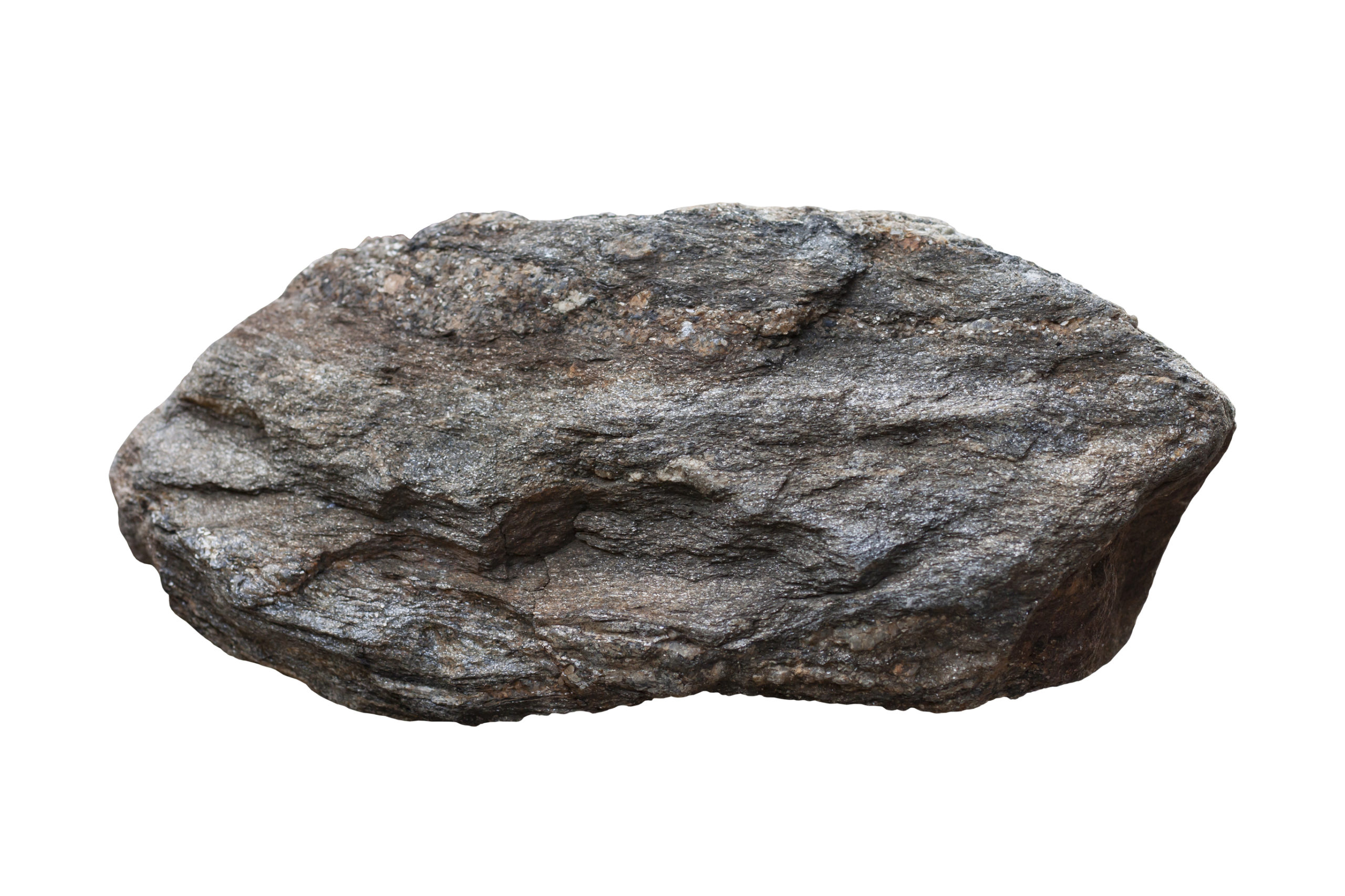
A schist can technically be composed of almost any combination of minerals as long as the rock has a schistose texture.
While schist doesn’t have a defined mineral composition, in practice there are some minerals that are very commonly found in schist because they are much more likely to develop a schistose texture during metamorphism. Platy minerals like muscovite, biotite, chlorite, talc, and graphite are the most common minerals in schist, and are responsible for its characteristic appearance.
While all schist meets this general description, there is a pretty wide spectrum of schists. The varying mineralogy of schist means that it can come in a wide spectrum of colors. Schist very commonly contains large inclusions of gem minerals like garnet, kyanite, and staurolite which can make specimens look very different from one another.
Texture of Schist
Since a schist is primarily defined by its texture, it first helps to know what schistose texture looks like.
Schistocity is a type of metamorphic foliation that describes the parallel orientation of large crystals of platy minerals in a rock, making it easy to break the rock along those planes.
One often-overlooked aspect of schistosity is crystal size. In order for a rock to be considered schist, you have to be able to see the individual crystals with the naked eye. If you can’t see the crystals without the aid of a hand lens then you may very well be looking at phyllite, which is a precursor to schist in the metamorphic process.
Similarly, a schist has not yet developed distinct alternating bands of minerals like quartz and feldspar. A banded texture like that is known as gneissic and is the next phase of metamorphism beyond schist. The boundary between schist and gneiss is blurry, and it is not uncommon to see a rock that displays both textures.
Color is Driven by Mineralogy
The huge variation in the mineralogy of schist means that it can come in a wide variety of colors. The dominant platy mineral often has the biggest impact on color, but it is also affected by the amount of quartz, feldspar, and accessory minerals present in the rock.
Mica schist is probably the most common variety, and it often appears as shiny gray or dark gray, depending on the type of mica present (muscovite or biotite). These micas act like small mirrors that reflect the light.
Chlorite has a distinct green color and is the dominant platy mineral in greenschist. Similarly, high glaucophane content gives the rock a deep blue color and is known as blueschist. Many other colors are possible including off-white (talc) and dark silver (graphite).
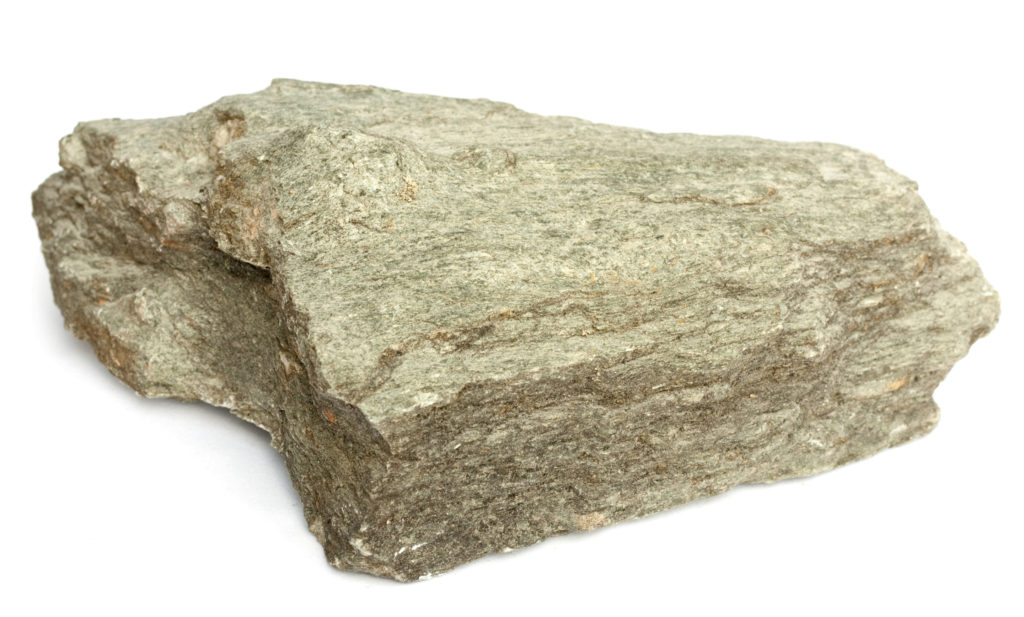
How to Identify Schist
Even with a clear picture in your mind of what schist is supposed to look like, it can sometimes be difficult to identify. As with most rock types, if you have a rock that you suspect might be schist it is best to take a more methodical approach in the identification process.
To identify schist, first take note of its texture and look for large, platy minerals oriented roughly parallel to one another. If possible, see if you can break off thin sheets from the rock. Then, try to identify the major platy minerals and any bulky accessory minerals like quartz, garnet, or kyanite.
A rock must meet all of these requirements to be considered a schist:
- Metamorphic – Formed from physical and chemical changes caused by heat and pressure
- Coarse-grained – The grains of the rock matrix are visible to the naked eye
- Schistose Texture – Strongly foliated with roughly parallel orientation of minerals
Many (but not all) schists also have the following characteristics:
- Platy Mineral Composition – Mineral grains form thin sheets like a deck of cards
- Large Mineral Inclusions – Nonfoliated minerals like garnet and staurolite may be present
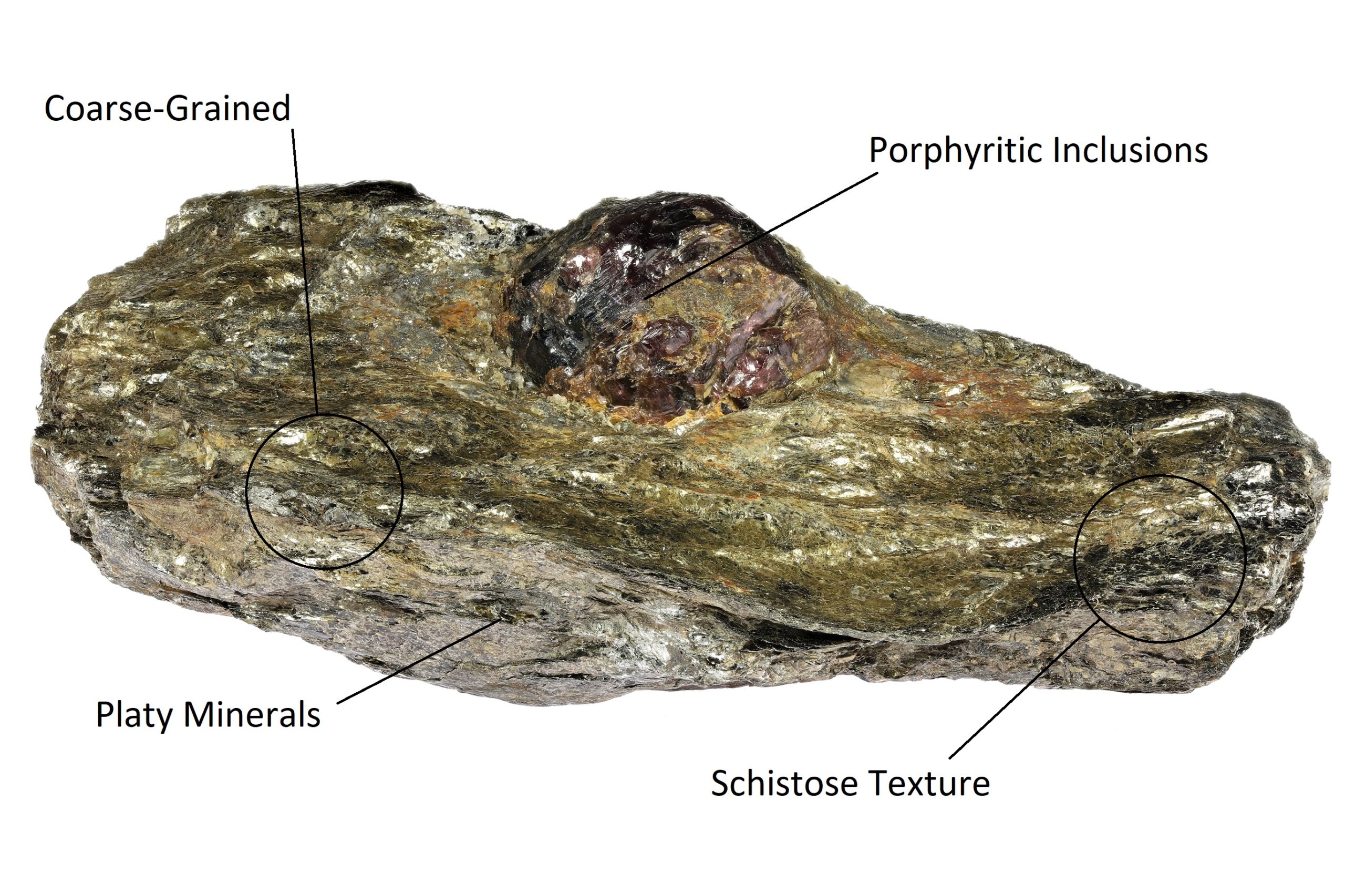
If your rock meets all of those criteria then it is a schist, or at least something very closely related.
Tip: This article is part of my metamorphic rock identification series. To learn about how to identify all metamorphic rocks, check out my article here.
Always bear in mind that schist can occur in a wide variety of colors. Shades of gray and brown are the most common due to high mica content, but colors like green, blue, and rust-red common. Don’t assume that a rock isn’t schist just because a rock isn’t gray.
When observing and identifying a rock like schist it can often be useful to use a hand lens like this one from Amazon. This allows you to see the individual grains and internal structures more clearly and often helps you identify the specific species of minerals present in a rock.
Even with these clear criteria for identifying schist, it is common for people to confuse different rock types for schist. There are a few rocks that look close enough to schist that they can easily confuse people, so it is useful to know what some of those closely-related rock types are called and what they look like.
Rocks that are often misidentified as schist:
- Slate – A foliated metamorphic rock that is a precursor to schist, but is very fine-grained and lacks schistosity
- Phyllite – A foliated metamorphic rock that is a precursor to schist, but is fine-grained with little to no schistosity
- Gneiss – A foliated metamorphic rock with gneissic mineral banding, that forms when schist is further metamorphosed.
The wide variation of schists mineralogy has led geologists to further classify schists based on their composition. Identifying a rock as ‘schist’ is probably good enough for most of us at home, but it is usually insufficient for geological work.
In order to further classify schist, you list identifiable minerals in increasing abundance before the word ‘schist’. So, a schist with 10% garnet, 20% quartz, and 70% mica would be called a ‘garnet-quartz-mica schist.’
It is also common for geologists to describe a schist based on its protolith (the original rock from which it formed). If it is known that a schist formed from a sedimentary rock (most common) it is called a paraschist, and if it formed from an igneous rock it is called an orthoschist. Similarly, if the specific rock type protolith is known (shale, for example), a schist might be called a ‘schistose metashale.’
What Is Schist Made Of?
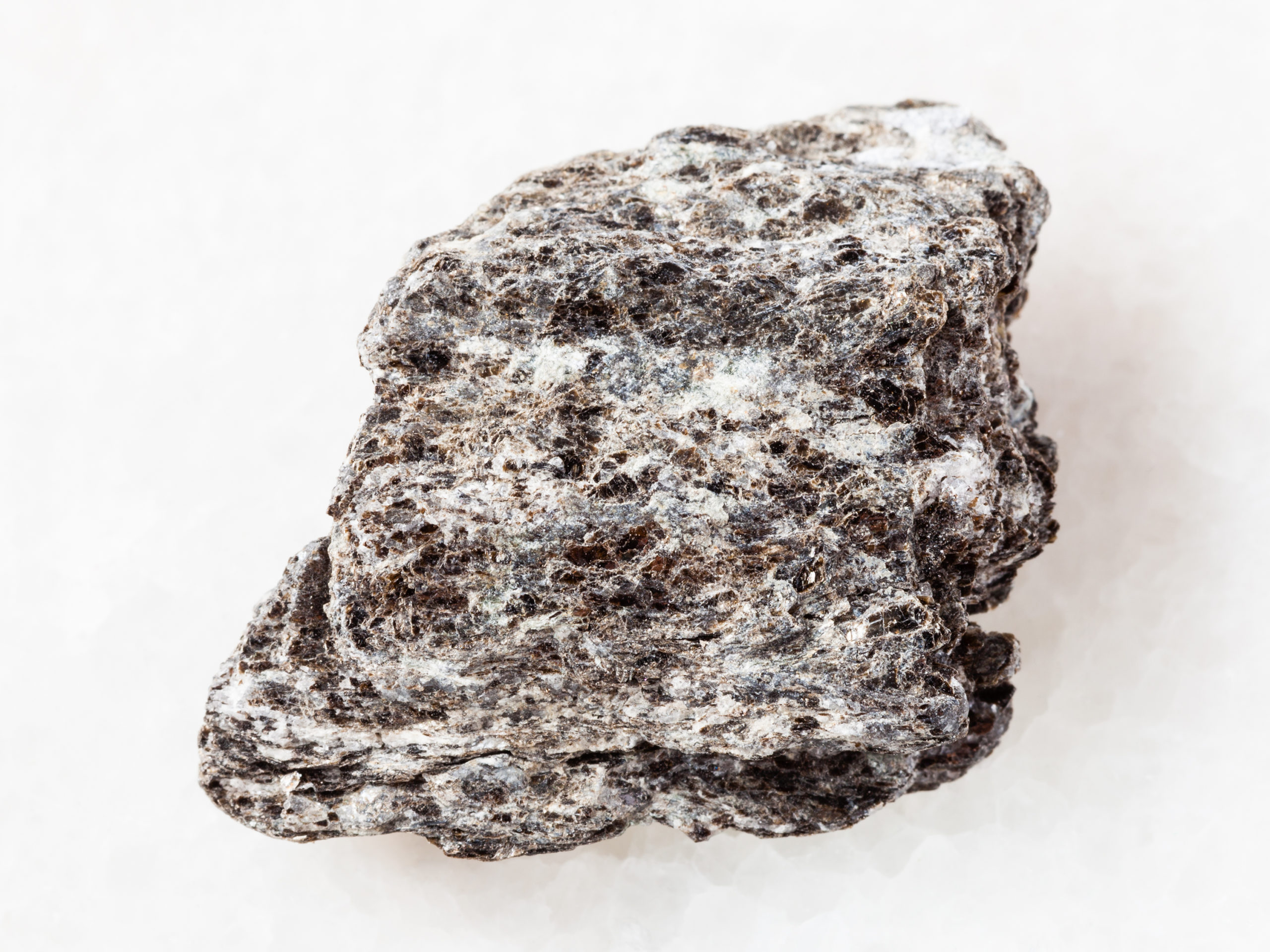
The composition of schist is extremely varied from one specimen to the next. Because schist is primarily defined by its texture, the presence and relative amounts of its composite minerals can be just about anything. Still, there are some minerals that tend to be present in most schists because they form in a specific metamorphic environment.
In general, schist is made from platy minerals like biotite, muscovite, chlorite, graphite, and talc. Smaller amounts of bulky minerals like quartz and feldspar are often present, and large inclusions of metamorphic gemstone minerals like garnet, staurolite, and kyanite are common.
The vast majority of the total volume of schist is platy minerals. The thin sheets of these platy minerals make up the matrix (the main part of the rock) that binds any other minerals together.
The highlight of schist for many people is the inclusions that are often found within the matrix. These large gemstone minerals like garnet and staurolite form during the metamorphic process but don’t usually flatten and orient themselves like the platy minerals do. This gives them a pronounced look in the rock and usually disrupts the schistose texture. These large crystals are called porphyroblasts, and in addition to being fun to look at they are often used to help understand the metamorphic path the rock has taken.
It is common to do an acid test on rocks during the identification process to check for the presence of calcium carbonate. A weak hydrochloric acid solution will react and fizz on the surface of a rock if calcium carbonate is present. Schist will not react with acid because you will almost never find a schist with calcium carbonate in its composition. If your rock reacts with hydrochloric acid, it is not schist.
Where Is Schist Found?
Schist is a very common rock in the Earth’s crust, and one of the most abundant metamorphic rocks you can find. It is created by the regional metamorphism of very common rock types, so there is no shortage of material from which it can form. Still, schist isn’t present just anywhere. If you are looking for it, it helps to know the type of geologic setting to look in.
Schist is found in mountainous regions where metamorphic rock has been exposed on the surface. The continental side of convergent plate boundaries like the Pacific Northwest are ideal, where rocks are exposed to heat and pressure and thrust upwards. If slate or gneiss is present, schist is also likely present nearby.
In order to find schist, you have to have a sense of the geologic settings around you. If you’re in an area with only young sedimentary rocks exposed on the surface, you have no chance of finding schist. However, if there are areas near you with hills or mountains you are much more likely to be successful.
You can always consult geological maps for your area and see if there are large schist formations exposed on the surface. But you can also use your knowledge and intuition! If you see gneiss or phyllite, chances are that if you follow that formation one way or the other it will gradually grade into schist.
In the U.S., you can find schist in places like the Appalachian Mountains and in the Pacific Northwest. These areas have at one time or another undergone significant compression and mountain building which is ideal for creating the metamorphic environment necessary to make schist.
How Does Schist Form?
We’ve learned all about what schist looks like, what it is composed of, and generally where it’s found, but I have only briefly touched on how it’s actually formed. The creation of schist is a fascinating process that takes a specific combination of circumstances to occur.
In general, schist forms from the regional metamorphism of clay-rich rocks like shale, mudstone, and volcanic tuff. These rocks are compressed, gradually metamorphosing into slate, then phyllite, and eventually schist as their minerals recrystallize and grow perpendicular to the direction of maximum stress.
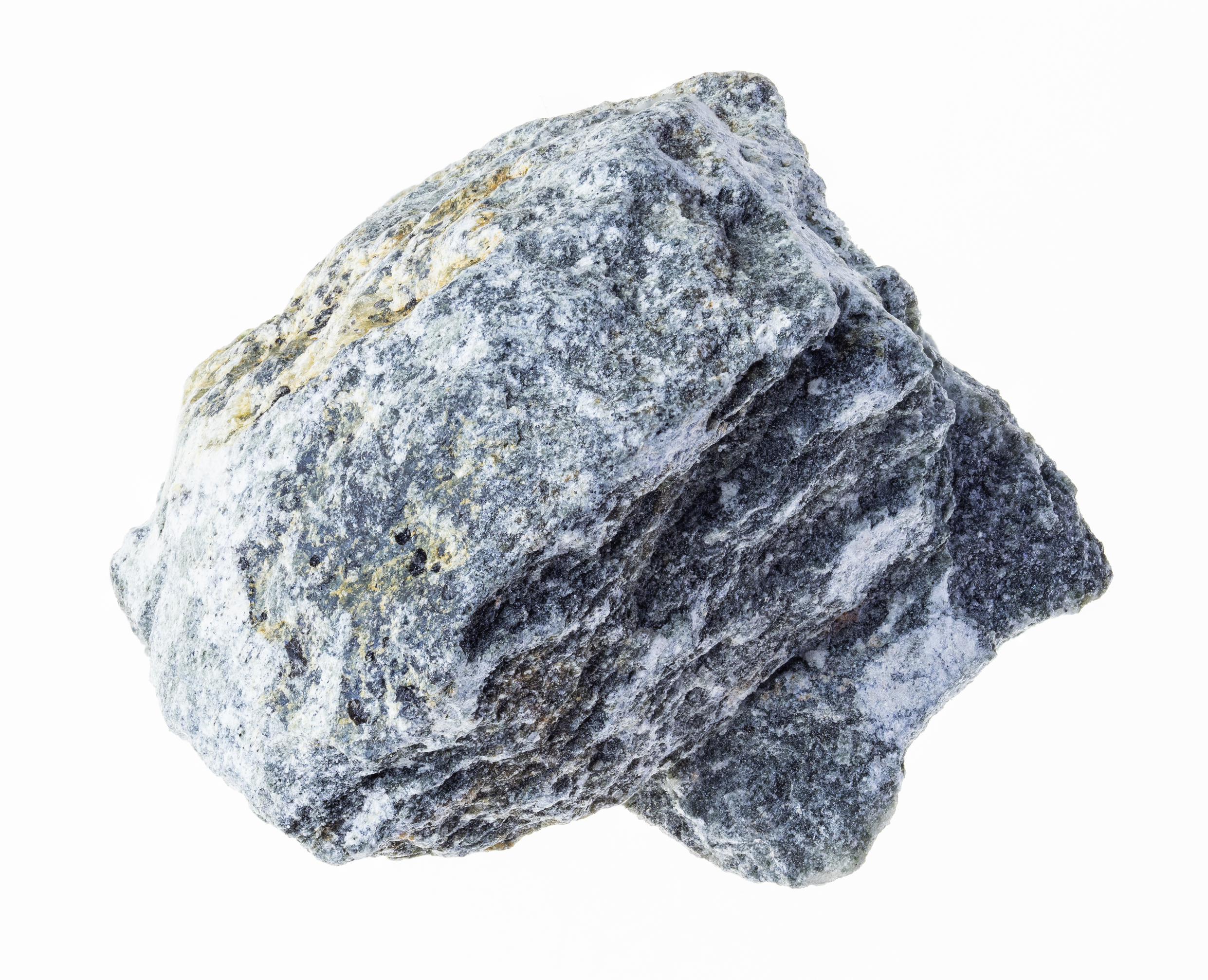
The first step in the creation of schist is the presence of a clay-rich protolith. In most cases this is a sedimentary rock like shale or mudstone, but sometimes it can be a volcanic tuff where the volcanic ash forms a thick layer of bentonite. These clay minerals have the necessary chemistry to be transformed by heat and pressure into platy minerals like mica and chlorite. These clay-rich rocks are usually buried under many more layers of rock over millions of years of deposition.
The next step to creating schist is compression. Tectonic forces in the Earth cause huge masses of rock to be pushed and squeezed together, creating enormous amounts of stress and heat. These conditions allow for the original minerals of the protolith to gradually transform into minerals that are more stable at higher pressures and temperatures.
Schist gets its distinct texture from the preferential orientation of its platy minerals. This orientation is a result of the regional compression the rock is enduring. The platy minerals form perpendicularly to the direction of maximum stress because that is the orientation in which they are the most stable.
This process is gradual, and before a rock becomes schist it first goes through stages as slate and then phyllite. With increasing pressure, temperature, and time, the platy metamorphic minerals have time to grow and further orient themselves. The process of metamorphism will take the clay-rich protolith and turn it into very fine-grained slate, then medium-grained phyllite, and finally medium-grained schist. With further metamorphism, the schist will become gneiss.
What Is Schist Used For?
You don’t typically see schist used much for practical purposes in everyday life. Its mechanical properties make it impractical for use in construction because its schistose texture means it will shear and crumble easily
Schist is most commonly used for applications where the mechanical properties of a rock are not important. Rough pieces of schist can sometimes be used for decorative purposes, but these applications are limited because it does not accept a polish well.
From an economic and recreational standpoint, the most interesting thing about schist is often the gem minerals it contains. Garnet, kyanite, staurolite, and sometimes beryl can be found in schist layers which makes for fun collecting. In some cases, they can hold economic value, but in usually these crystals are too low quality due to impurities and inclusions.
This article is part of my rock identification series. I invite you to keep reading about how to identify rocks with my full in-depth guide here.
